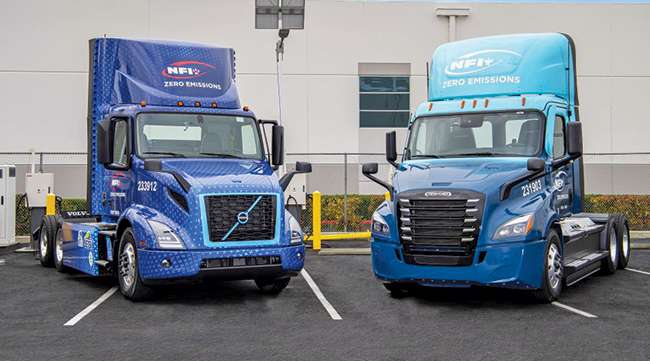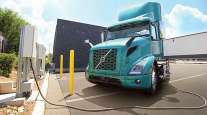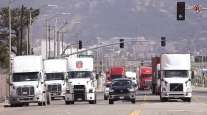Challenges Seen for California’s Advanced Clean Fleets Rule

[Stay on top of transportation news: Get TTNews in your inbox.]
PORTLAND, Ore. — Clean transportation advocates are in a race to transform the trucking industry in California as the state moves closer to a mandate requiring zero-emission vehicles by 2035.
The Advanced Clean Fleets rule, enacted by the California Air Resources Board, will transform the state’s sizable ports industry — which supports more than 30,000 drayage trucks traveling more than a billion miles annually — away from diesel power toward electric mobility.
The regulation has been criticized by a number of trucking stakeholders, including American Trucking Associations, who say the regulation’s timelines are unrealistic.
Rewiring an industry on this scale will take the collaboration of dozens of local and state leaders spanning utilities, labor and community groups and truck makers. One looming challenge will be the equitable transformation for small operators, who will also have to phase out their fossil fuel vehicles for new models, with new operational abilities, said Matt Leducq, CEO of Forum Mobility, a provider of heavy-duty vehicle charging services.
“It’s easy to make mandates. It’s harder to make them equitable,” Leducq said on a May 17 panel at the Forth Roadmap conference in Portland, Ore. “We can’t just do mandates and say, ‘thou shalt do it.’ It’s got to be done in a way that is equitable. It’s got to be accessible to the people who move our goods. And it takes a lot of work.”
The state has partnered its mandates with a range of incentives like the Carl Moyer Memorial Air Quality Standards Attainment Program, which provides grant funding for small operators to make the transition.

Chad Crotty of DDC FPO Solutions discusses how fleets handle outsourced business services. Tune in above or by going to RoadSigns.ttnews.com.
Groups like the Los Angeles Cleantech Incubator have been working with communities, utilities and operators to devise a plan for placing charging infrastructure, a capital investment that will top $280 million in Los Angeles County alone. (That investment is tripled when considering the truck recharging needs in neighboring Riverside and San Bernardino counties.)
“The concerns are not only where do you want to alleviate pollution in the near-term, but also, where do you want trucks to not be driving because of safety concerns, coming through residential areas,” said Jack Symington, senior program manager for transportation at LACI, during the panel.
Meanwhile, the South Coast Air Quality Management District has been involved with the Joint Electric Trucks Scaling Initiative (JETSI) in Southern California to deploy 100 drayage trucks, complete with charging infrastructure. The project includes partnerships with Daimler Truck North America and Volvo Trucks North America, and also includes the development of microgrids, DC fast chargers and more.
“We know the technologies work. They’re commercially available. So basically, how can we help these fleets to basically make that next step up?” said Patricia Kwon, program supervisor for technology demonstration with the South Coast Air Quality Management District.
The demonstration project began in late 2021, with both sites still in active construction. The trucks are expected to be operational by mid-June, said Kwon, speaking on a panel exploring electrified medium- and heavy-duty vehicles.
“This is not just a technology project. It’s also a community and stakeholder outreach project. It’s a workforce development project. There are a lot of kind of equity and scale priorities,” she added.
Want more news? Listen to today's daily briefing above or go here for more info
“California’s got a lot of carrots,” said Leducq, pointing to the dozens of incentive programs and other initiatives the state has developed to make this transition a reality. “It’s a complicated thing to get access to these things.”
“I would say we really just need to focus on doing this well, and right,” he added. “And making sure that the drivers of those fleets and those carriers have more money in their pocket the next year than they did the year before.”
Distributed by Tribune Content Agency, LLC




